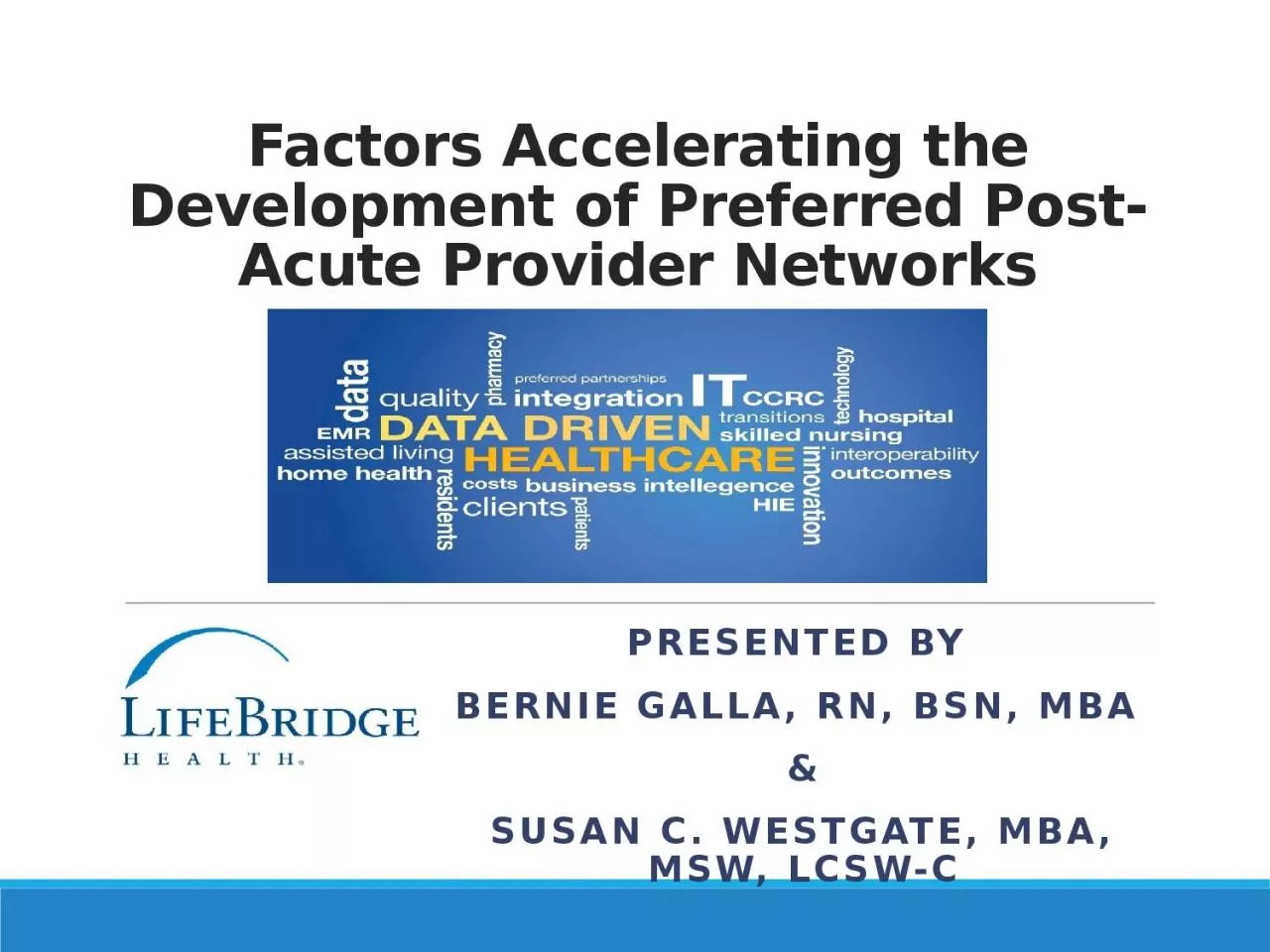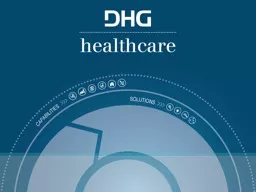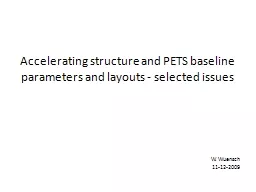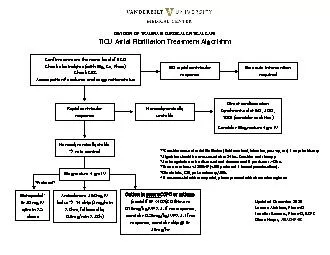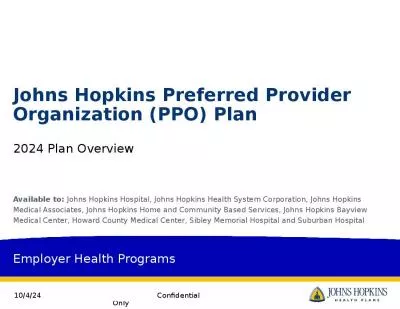PPT-Factors Accelerating the Development of Preferred Post-Acute Provider
Author : christina | Published Date : 2024-02-02
Networks Presented by Bernie Galla RN BSN MBA amp Susan C Westgate MBA MSW LCSWC Introductions Susan C Westgate MBA MSW LCSWC CoChair of the Skilled Nursing
Presentation Embed Code
Download Presentation
Download Presentation The PPT/PDF document "Factors Accelerating the Development of ..." is the property of its rightful owner. Permission is granted to download and print the materials on this website for personal, non-commercial use only, and to display it on your personal computer provided you do not modify the materials and that you retain all copyright notices contained in the materials. By downloading content from our website, you accept the terms of this agreement.
Factors Accelerating the Development of Preferred Post-Acute Provider: Transcript
Download Rules Of Document
"Factors Accelerating the Development of Preferred Post-Acute Provider"The content belongs to its owner. You may download and print it for personal use, without modification, and keep all copyright notices. By downloading, you agree to these terms.
Related Documents

